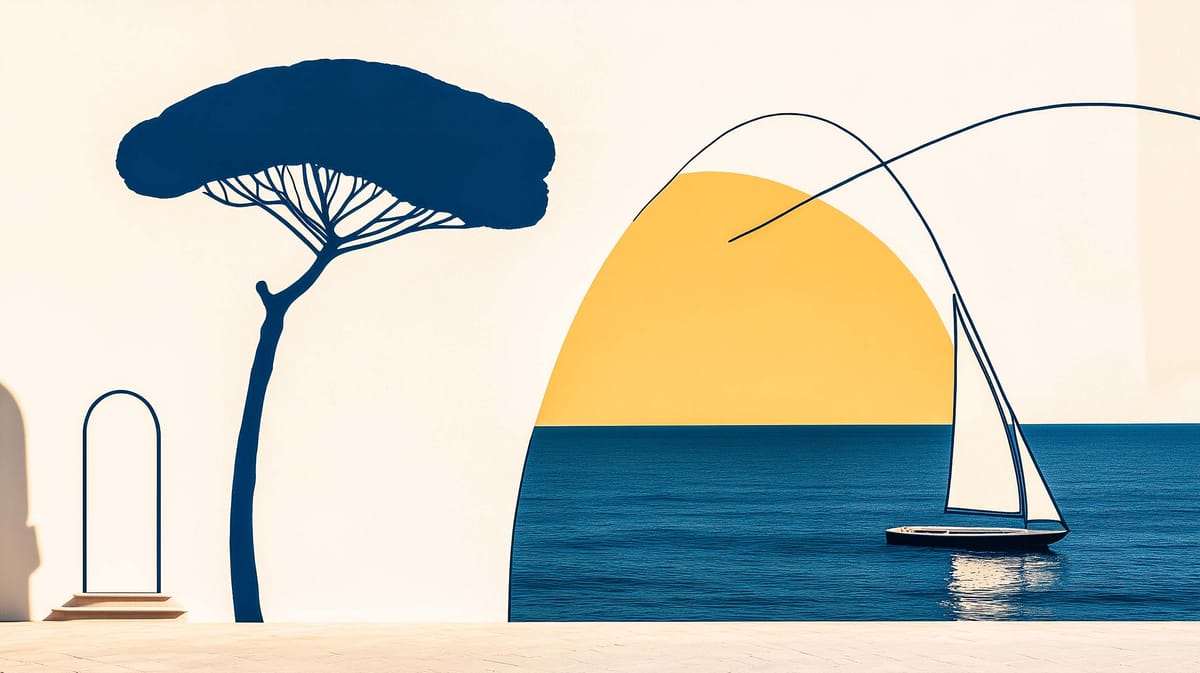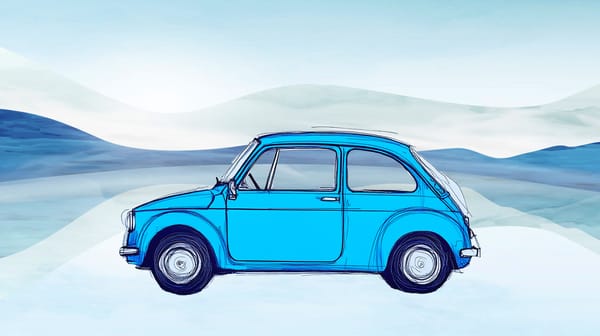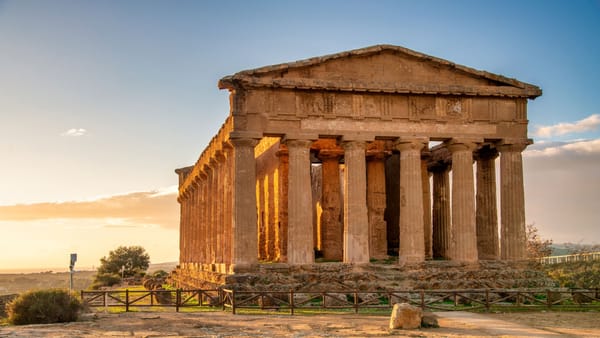The First Glimpse of the South
The journey begins as the sun rises over the Tyrrhenian Sea, casting a warm, golden light across the bustling city of Naples. In a quiet corner of the city, parked under a canopy of bougainvillea, sits "Diario 500," a bright blue Fiat 500. Its polished exterior sparkles in the morning light, ready for another day of adventure. But today’s journey is not just another trip along the scenic roads of Southern Italy. Today, "Diario 500" embarks on a personal pilgrimage, a journey to capture the essence of a land it loves dearly—a journey that is, in essence, a love letter to Southern Italy.
"Diario 500" has always felt an inexplicable connection to this part of the world. From the moment it first rolled onto the cobblestone streets of Naples, it was captivated by the vibrant culture, the rich history, and the breathtaking landscapes of the South. Each turn of its wheels, each journey it undertook, only deepened its love for this unique region, where the past and present coexist in perfect harmony.
With the city of Naples awakening around it, "Diario 500" sets off on its journey. The first stop is the Amalfi Coast, where beauty and romance linger. As it drives along the winding coastal roads, the car is greeted by the deep blue sea stretching out to the horizon, the waves gently lapping at the rocky shore below. The cliffs, covered in vibrant greenery and dotted with pastel-colored houses, rise dramatically from the water, creating a stunning backdrop for the journey ahead.
The road twists and turns, revealing new vistas at every bend—hidden coves, quaint fishing villages, and terraced vineyards that cling to the steep hillsides. "Diario 500" takes it all in, its engine purring contentedly as it navigates the narrow roads. This place fills the car with peace as if it has found its true home.

In Positano, "Diario 500" pauses to admire the town’s cascading houses, which seem to tumble down the hillside toward the sea. The town is a postcard come to life, with its narrow streets lined with boutique shops, cafés, and art galleries. As the car rolls through the town, it is greeted with smiles and waves from the locals, who recognize the iconic Fiat 500 as a symbol of Italian charm and style.
But "Diario 500" knows there is more to Southern Italy than just the beauty of its coastline. It is a land of contrasts, where ancient history and modern life exist, where traditions are cherished and passed down through generations. With a final glance at the sparkling sea, "Diario 500" leaves the Amalfi Coast behind and sets its sights on the next destination: the heart of Campania, where the echoes of ancient Rome still resonate in the ruins of Pompeii.
A Walk Through History
The road to Pompeii is lined with lush vineyards and olive groves, their leaves rustling in the gentle breeze. As "Diario 500" approaches the ancient city, it can feel the weight of history in the air. Pompeii, once a thriving Roman city, was frozen in time by the catastrophic eruption of Mount Vesuvius in 79 AD. Today, it stands as a testament to the resilience of the human spirit, a place where the past is preserved in stunning detail.
"Diario 500" parks at the entrance to the archaeological site, its bright blue exterior starkly contrasting the weathered stone walls of the ancient city. As it rolls through the cobblestone streets, the car imagines what life must have been like in Pompeii all those centuries ago. The streets are lined with the remains of grand villas, bustling markets, and ornate temples, each one telling a story of the people who once lived here.
One of the most poignant stops on the journey is the Forum, the heart of ancient Pompeii. Here, "Diario 500" pauses to view the ruins, with Mount Vesuvius looming ominously in the distance. The Forum was once the center of public life in Pompeii, where citizens gathered to discuss politics, trade goods, and worship the gods. Today, it is a place of quiet reflection where visitors can connect with the past and pay tribute to those who perished in the eruption.
As "Diario 500" continues its journey through Pompeii, it is struck by the incredible preservation of the city. The frescoes on the walls of the villas are still vibrant with color, depicting scenes of daily life, mythology, and nature. The intricate mosaics on the floors tell stories of love, war, and the changing seasons. It is as if the city is frozen in time, waiting for the people to return and breathe life into its streets again.
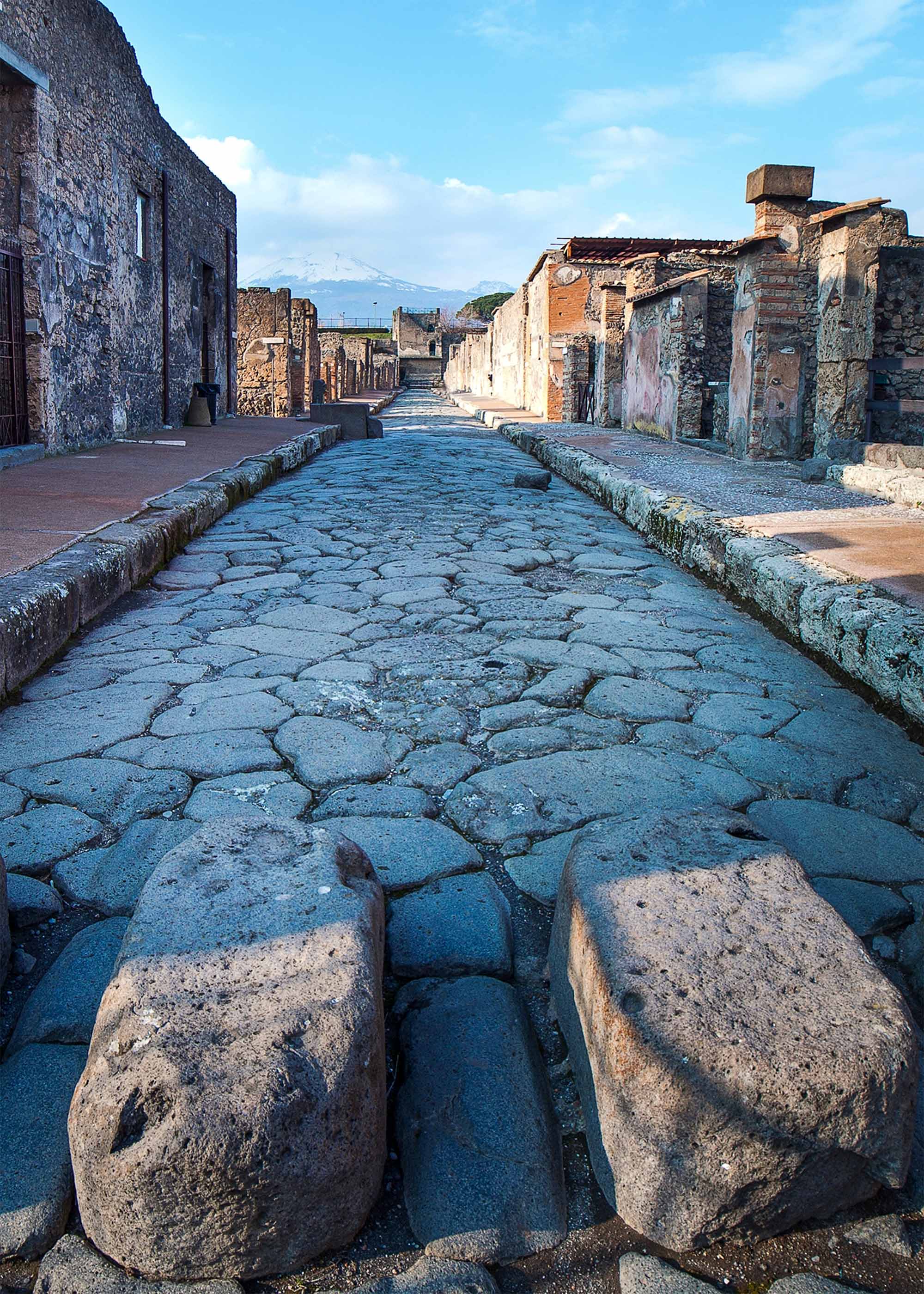
Leaving Pompeii behind, "Diario 500" heads toward the Sorrento Peninsula, where the landscape's rugged beauty is matched only by the warmth of the people who call it home. The road climbs higher into the hills, offering panoramic views of the Bay of Naples and the island of Capri in the distance. The air is filled with the scent of citrus as lemon and orange groves line the roadside, their fruit ripening in the sun.
In Sorrento, "Diario 500" is greeted by the sight of terraced gardens that cascade down the cliffs to the sea. The town is famous for its lemons, and the car can’t resist stopping to sample the local limoncello, a sweet and tangy liqueur made from the zest of Sorrento lemons. As it sips the refreshing drink, "Diario 500" takes a moment to reflect on the journey so far. Each stop has revealed a different facet of Southern Italy, each more enchanting than the last.
But there is still so much more to discover. With the taste of limoncello lingering on its tongue, "Diario 500" sets off again, heading south to Calabria, where the mountains meet the sea in a dramatic display of natural beauty.
Calabria’s Untamed Beauty
Calabria, the toe of Italy’s boot, is a land of rugged mountains, pristine beaches, and ancient villages that cling to the cliffs above the sea. It is a region that has remained largely untouched by tourism, preserving its wild beauty and rich cultural heritage. As "Diario 500" drives deeper into Calabria, it can feel the land's energy, as if the mountains are alive with the spirit of the people who have lived here for centuries.
The road to Scilla, a picturesque fishing village on the Tyrrhenian coast, is winding, but "Diario 500" reveals the challenge. The car hugs the road's curves, its engine humming with satisfaction as it climbs higher into the hills. The landscape is a patchwork of olive groves, vineyards, and fields of wildflowers, with the deep blue sea stretching out below.
Scilla is a town steeped in myth and legend. It is named after the sea monster Scylla, who, according to Greek mythology, once terrorized sailors in the Strait of Messina. The town is divided into two parts: the old town, with its narrow streets and ancient stone houses, and the Marina Grande, a stretch of golden beach lined with colorful fishing boats.
"Diario 500" rolls into the old town, where the streets are so narrow that the car’s mirrors nearly brush against the stone walls. The air is filled with the scent of the sea and the sound of seagulls calling overhead. The car makes its way to the top of the town, where the imposing Castello Ruffo stands guard over the harbor below. From this vantage point, "Diario 500" can see the entire town spread out before it, with the mountains rising in the distance and the sea sparkling in the sunlight.
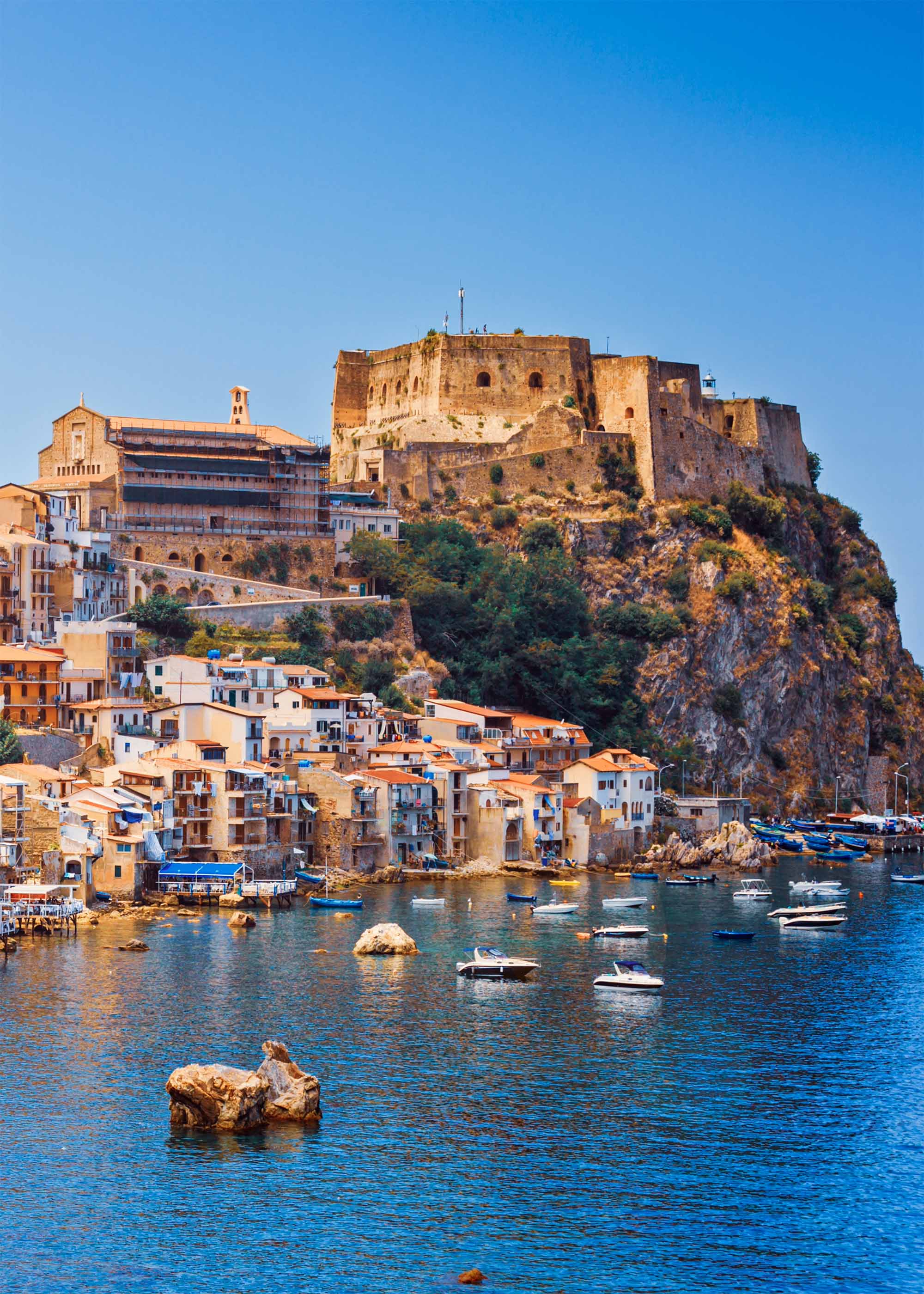
As it descends back into the heart of the village, "Diario 500" stops at a small trattoria. The owner, a weathered fisherman with a warm smile, serves up a plate of freshly caught swordfish grilled to perfection and drizzled with olive oil and lemon. The car enjoys the meal, savoring the flavors of the sea, and reflects on the simplicity of life in this corner of Italy, where the rhythms of nature dictate the pace of life.
From Scilla, "Diario 500" continues its journey along the coast, passing through tiny villages where time seems to stand still. The road eventually leads to Tropea, a town perched on a cliff above the sea, known for its stunning beaches and sweet red onions, which are celebrated in local cuisine.
"Diario 500" parks at the cliff's edge and gazes at the view. Below, the turquoise waters of the Tyrrhenian Sea lap at the sandy shore, while above, the ancient buildings of Tropea rise like a crown atop the cliff. It is a sight that takes the car’s breath away, a reminder of the power and beauty of nature and the enduring legacy of the people who have called this land home for millennia.
But "Diario 500" knows that its journey is far from over. There is still one more region to explore, one more chapter to write in this love letter to Southern Italy. With the sun setting behind it, casting a warm glow over the landscape, the car sets off again, heading east to the region of Puglia, where the trulli houses and olive groves await.
The Magic of Puglia
Puglia, the heel of Italy’s boot, is a land of sun-drenched plains, ancient olive groves, and whitewashed towns that seem to shimmer in the day's heat. It is a region that has long been a crossroads of cultures, where Greek, Roman, Byzantine, and Norman influences have left their mark on the architecture, cuisine, and traditions of the people.
As "Diario 500" drives through Puglia's flat, open landscape, it is struck by the contrast between the vast, open skies and the narrow, winding streets of the towns that dot the region. The first stop on this leg of the journey is Alberobello, a town famous for its trulli houses—unique, cone-shaped dwellings made from limestone, with whitewashed walls and grey stone roofs.
The sight of the Trulli is like something out of a fairytale, with their rounded forms and pointed roofs creating a whimsical landscape unlike anything else in Italy. "Diario 500" rolls through the narrow streets of Alberobello, admiring the craftsmanship that went into building these ancient homes. Each trullo is unique, with its character and charm, and many are still inhabited, their residents carrying on the traditions of their ancestors.
"Diario 500" parks in the heart of the town and takes some time to explore on foot, wandering through the labyrinthine streets and taking in the sights and sounds of this enchanting place. The car is drawn to a small trullo that has been converted into a café, where the owner serves up local delicacies such as orecchiette pasta, made from durum wheat and shaped like little ears, and taralli, savory ring-shaped biscuits flavored with fennel.
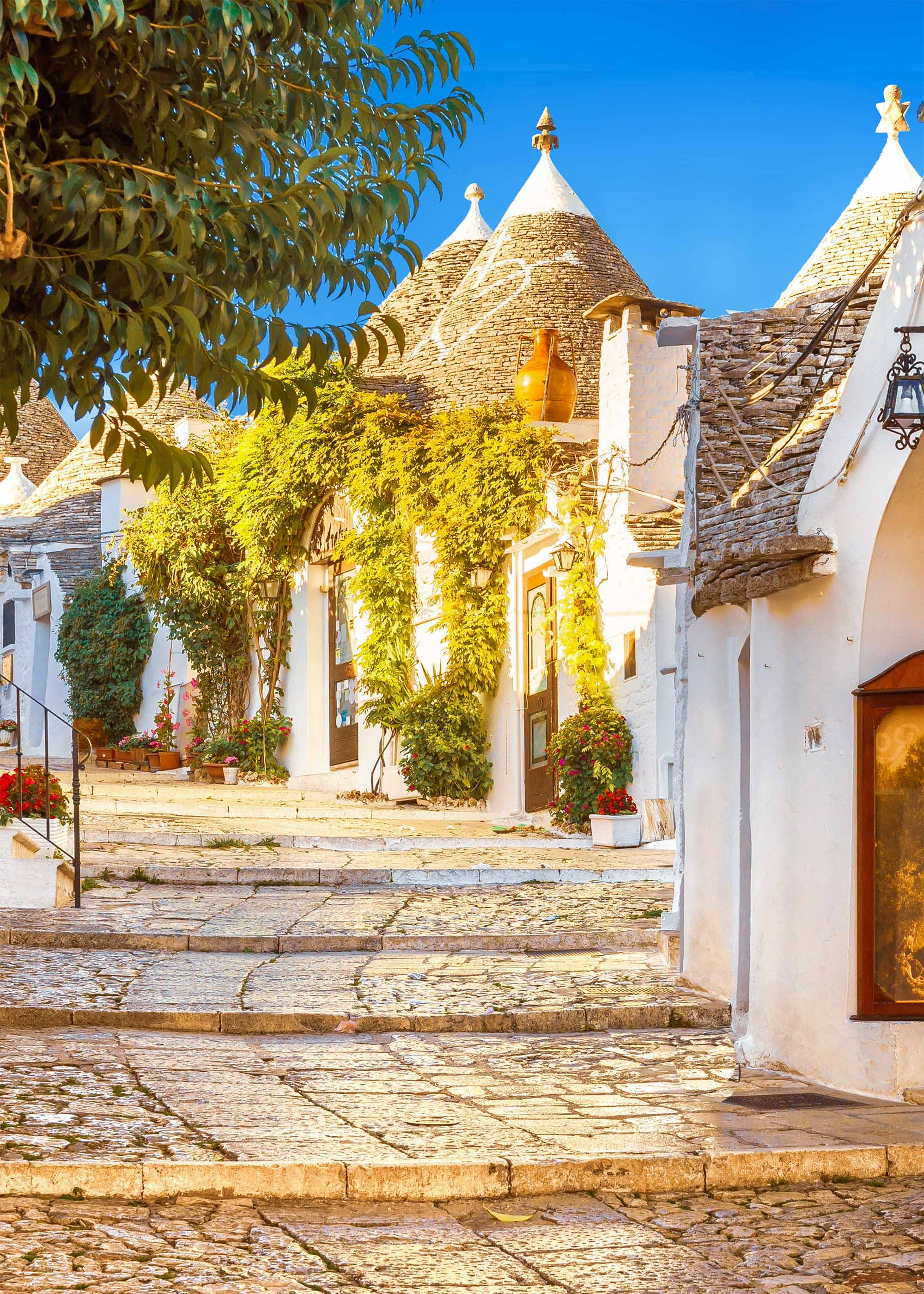
As "Diario 500" enjoys the simple yet delicious meal, it reflects on the unique character of Puglia. This region has managed to preserve its traditions and way of life despite the pressures of the modern world. There is a sense of timelessness here as if the land itself is content to remain as it has always been, untouched by time.
Leaving Alberobello behind, "Diario 500" continues its journey to Ostuni, another of Puglia’s famous white towns. Known as "La Città Bianca," or the White City, Ostuni is a dazzling sight, its whitewashed buildings gleaming in the sunlight. The town, perched on a hilltop, offers stunning views of the surrounding countryside and the Adriatic Sea beyond.
As "Diario 500" navigates the narrow streets of Ostuni, it is struck by the sense of history that permeates the town. Though whitewashed and well-preserved, the buildings bear the marks of centuries of use, their walls telling the stories of those who have lived and worked there. The town’s cathedral, intricate façade, and stunning interior remind us of the region’s rich religious heritage. Faith and art have come together to create something extraordinary in this place.
But Ostuni’s secrets aren’t just found in its architecture. The town is also home to one of the region's most ancient olive groves, where hundreds of years old trees still produce the finest olive oil in Italy. "Diario 500" makes its way to one of these groves, where the twisted, gnarled trunks of the olive trees stand like silent sentinels, watching over the land.
As "Diario 500" parks beneath the shade of one of these ancient trees, it reflects on its journey. From the bustling streets of Naples to the rugged beauty of Calabria, from the grandeur of Pompeii to the whitewashed towns of Puglia, the car has seen the many faces of Southern Italy, each one more enchanting than the last.
The Return to Naples
With its journey through Puglia complete, "Diario 500" turns its sights northward, heading back to Naples, where the journey began. The car feels a sense of fulfillment as it retraces its steps, knowing that it has experienced the very heart and soul of Southern Italy.
The road back to Naples is long, but "Diario 500" is in no hurry. The car takes its time, savoring the final moments of the journey and reflecting on all it has seen and experienced. The landscapes change as the car travels north, from Puglia's flat plains to Campania's rolling hills, each offering a different perspective on the region.
As "Diario 500" approaches Naples, the city comes into view, its skyline dominated by the imposing silhouette of Mount Vesuvius. The car is greeted by the familiar sights and sounds of the city, the bustling streets, the vibrant markets, and the warm smiles of the people who call this place home.
But "Diario 500" knows that its journey is far from over. There are still many more secrets to uncover and many more stories to tell. Southern Italy is a land that never ceases to surprise and enchant, a place where every turn of the road reveals something new and unexpected.
As the sun sets over the Bay of Naples, casting a warm golden light over the city, "Diario 500" parks again under the canopy of bougainvillea, its engine purring softly as it reflects on the journey. This love letter to Southern Italy is a collection of memories and a testament to a region's enduring beauty and spirit that has captured the car’s heart.
And so, with the stars beginning to twinkle in the sky above, "Diario 500" settles in for the night, dreaming of the adventures still to come and the many more love letters it will write to this land it holds dear.

